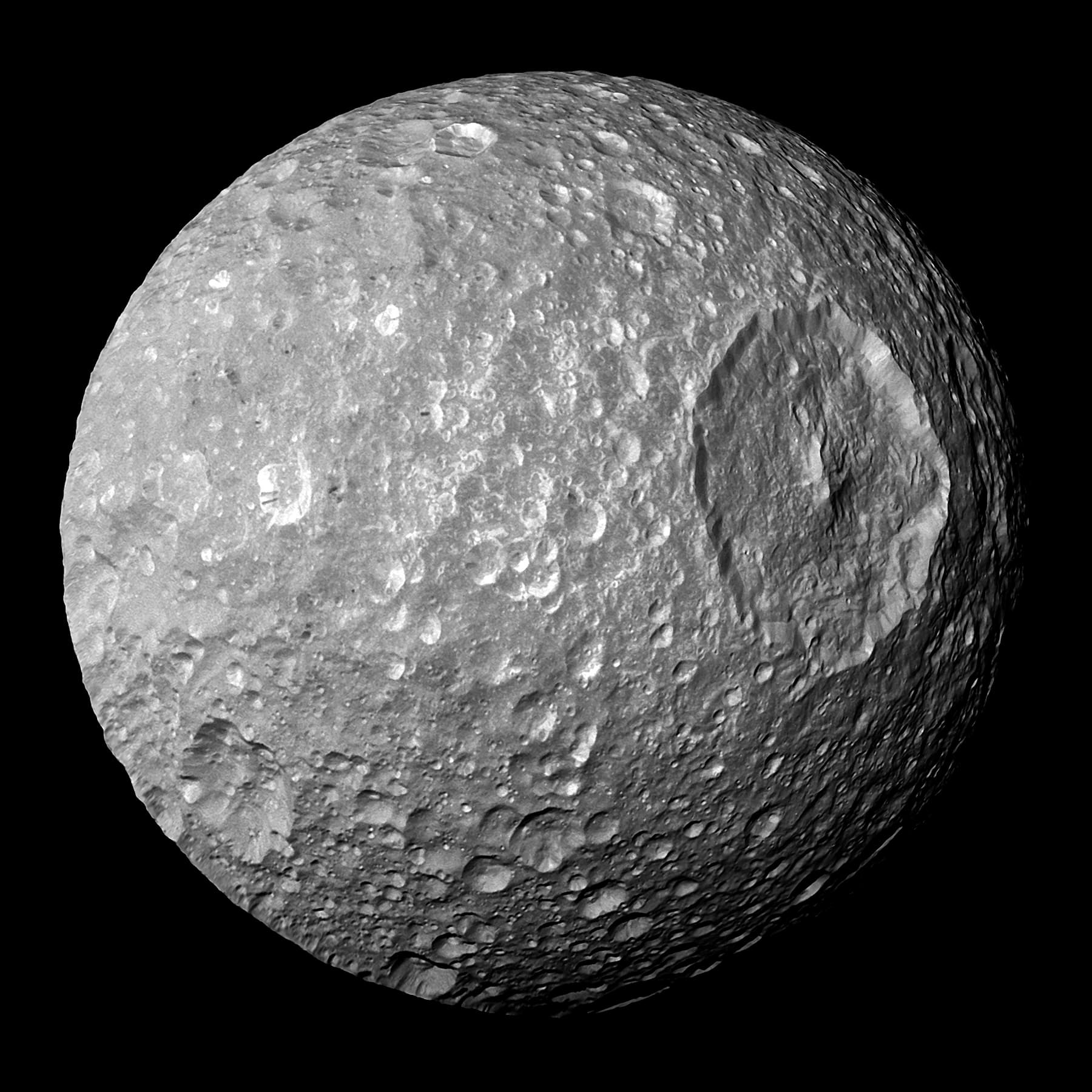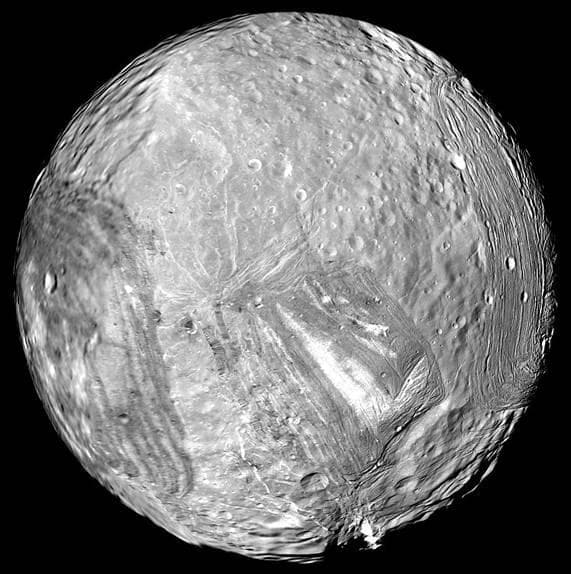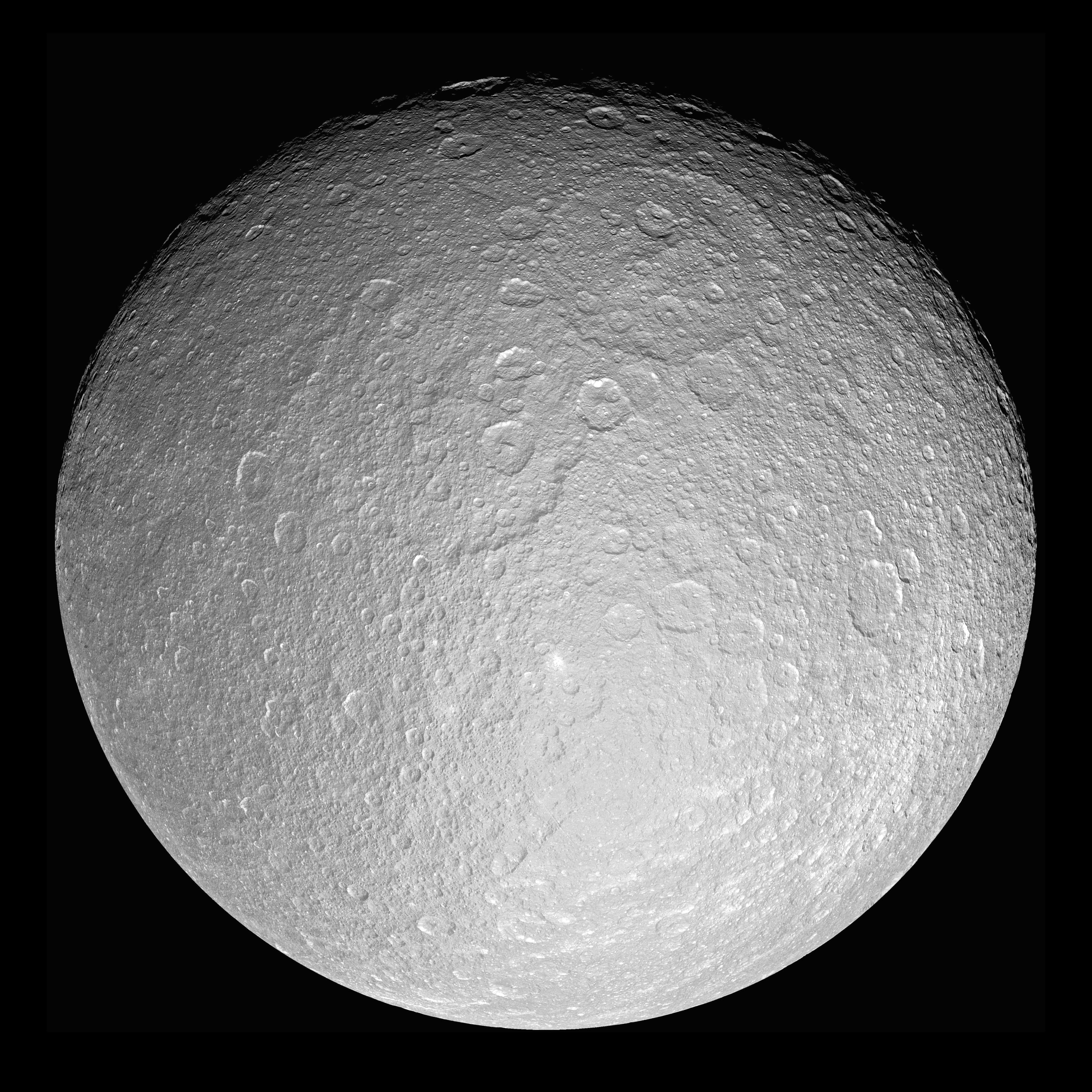Are Mimas and Miranda the smallest known objects in hydrostatic equilibrium?
Dan – London
This question relates to the shape of astrophysical objects and as we discussed in the past, it’s an important characteristic of stars, and it’s in the definition of “planet”. An object is round if it has hydrostatic equilibrium, meaning the pressure generated by its components balance the weight of those same components. Now if you go on Wikipedia and look at the gravitationally rounded objects of the Solar System, you’ll find that Mimas and Miranda are the two smallest objects listed in the solar system.
Mimas is the Death Star looking moon of Saturn. It orbits Saturn between the A and the E ring, and has a radius of 198.2±0.4 Km. Miranda is the smallest and innermost of Uranus’s five round satellites, with a radius of 235.8±0.7 km.

Mimas (Credit: Cassini/ESA)

Miranda (Credit: Voyager 2/NASA)
Although both satellites are round it’s not exactly correct to claim they are in hydrostatic equilibrium. They are the smallest round objects due to self-gravity, but ’round’ has a wide definition in astronomy. The Earth is round, but it’s not a perfect sphere. It is an oblate spheroid (the polar radius is 21km shorter than the equatorial one) due to Earth’s rotation, but this difference, as well as the irregularity in the surface, is minimal compared to its radius.
For stars and planets, the “Gravity=pressure makes a round object” is correct, because external gravitational forces and spin are negligible. But the situation is different for satellites which are often deformed or tidally locked by their planets.
Thanks to the data from the Cassini mission, Cornell University Astronomer P.C. Thomas[1] was able to use the precise radii of the main Saturnian satellites to estimate their sphericity. It turns out that Saturn creates a 5% difference in Mimas’s radius between the side facing it and the side facing away from it. Although it appears spherical, Mimas is a triaxial ellipsoid. But it is not all bad news: the same study showed that Rhea is truly in hydrostatic equilibrium, making it the smallest (radius 763.8±1.0km) truly round object in the solar system.

Rhea (Credit: Cassini/ESA)
REFERENCES
[1]P.C. Thomas, Sizes, shapes, and derived properties of the Saturnian satellites after the Cassini nominal mission Icarus 208 (2010) 395–401
